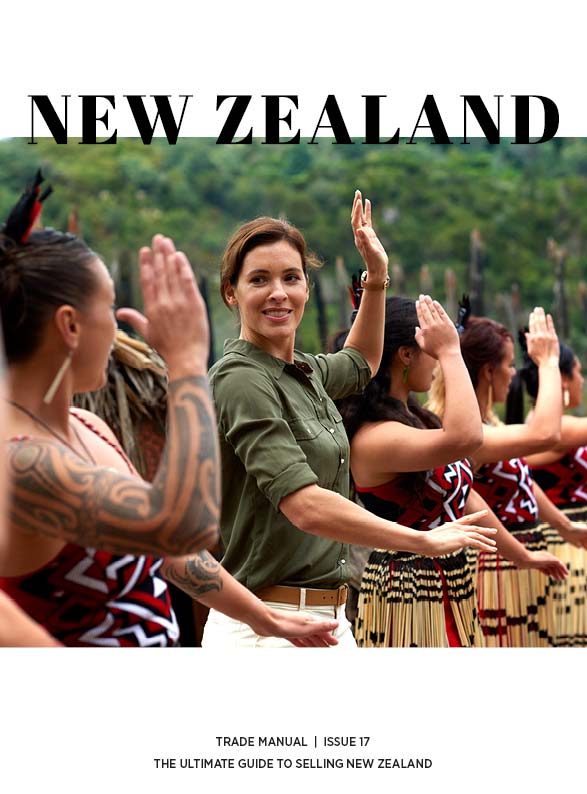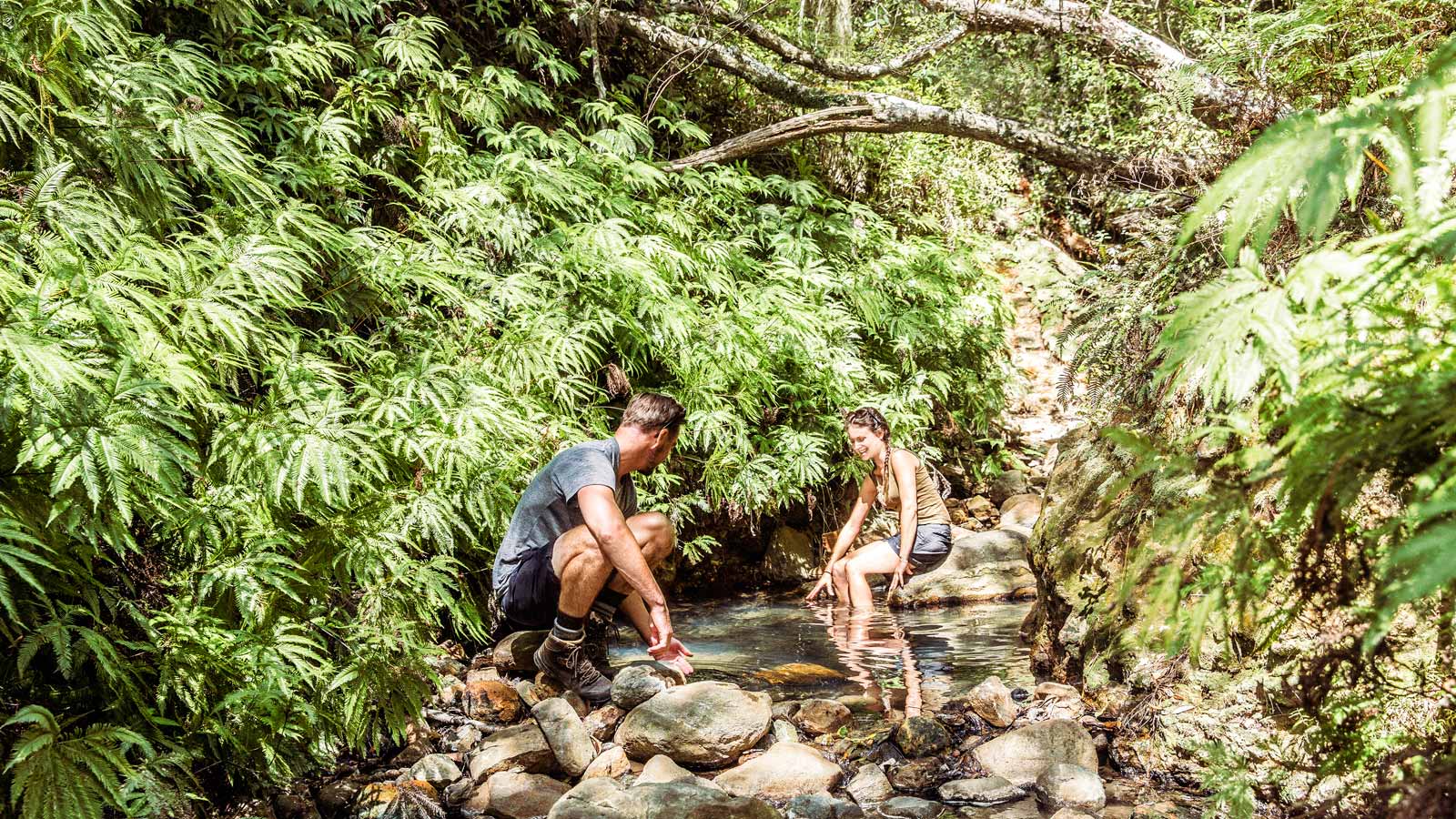85 million years ago New Zealand broke away from the ancient continent of Gondwanaland, and it has been an island nation ever since with wildlife evolving in seclusion for millennia. The result is a remarkable range of native species which can be found nowhere else in the world! Since the arrival of humans, however, habitat disturbance, hunting and introduced predators have taken their toll, and many species are now rare or endangered. Major conservation initiatives and rescue programmes are in place to protect and restore native wildlife.
Experiencing The Wildlife
Encountering New Zealand’s remarkable wildlife, whether it be a massive Sperm Whale or the tiniest kiwi chick, is guaranteed to be unforgettable.
Wildlife Encounters Coming face-to-face with marine mammals ranks high on the to-do list for most visitors, and there are opportunities to do so all around the country. Visitors can go on a whale-watching boat cruise in Kaikoura, kayak amongst seals or swim with wild dolphins. Spotting native birds is another must-do activity. The Gannet colony at Cape Kidnappers in Hawke’s Bay and the Little Blue Penguin colony at Oamaru are fascinating for visitors of all ages, or visitors can watch albatrosses off the Kaikoura coast or on the Otago Peninsula.
Wildlife Sanctuaries Visitors should call at one of several excellent wildlife reserves, which educate the public and have active breeding programmes to increase the numbers of rare species. Island sanctuaries have been an important aspect of species conservation in New Zealand for several decades. These islands are cleared of introduced species to recreate habitats as they existed before the arrival of humans. Native species thrive on these islands and visiting one is an incredible experience. Only a few are open to the public and entry is strictly controlled; Kapiti Island and Tiritiri Matangi are two of the more accessible. A more recent development has been the creation of mainland ‘islands’ – habitats that are protected by state-of-the-art electric fencing and then cleared of pests. Enormously successful, these areas allow native birds to thrive to the point where they start repopulating surrounding areas (unlike the pests, flying birds are free to come and go). They are also very accessible and a great place for visitors to see a wide range of native species. ZEALANDIA, for instance, is just minutes from Wellington’s city centre and is home to 200 Tuatara and numerous species of rare birds.
Life-Changing Close Encounters
- Slipping into the water with a pod of playful wild dolphins
- Looking into the huge eyes of a whale as it surfaces nearby
- Having a fearless wild Kaka parrot land on your head
- Seeing Kiwi foraging at dusk on a Stewart Island beach
- Having your boots stolen by a cheeky Kea (alpine parrot)
- Seeing Little Blue Penguins make the nightly march to their nests
- Waking to the liquid-honey song of Bellbirds or Tui
- Seeing a precious Kiwi egg hatch at a special sanctuary
Kiwi: New Zealand’s Strange National Icon
New Zealand’s most famous native bird is also one of its most unusual, with a number of characteristics that make it utterly unique in the world.
- The Kiwi is flightless and nocturnal – encourage your clients to visit a nocturnal house at a zoo or wildlife park, or take an evening tour at a Kiwi reserve to see them going about their business.
- This is the only bird in the world that has nostrils at the end of its beak – it uses them to sniff out food such as insects and fruit.
- Out of all bird species, the Kiwi has one of the largest egg-to-body-weight ratios (15% of body weight).
- The female Kiwi is larger than the male.
- Pairs usually bond for life and the male does most of the egg incubation (which takes about 70 to 85 days).
- Birds can live for 50 years – it is thought that one species, the Rowi, may live for up to 100 years.
- There are five species: the Tokoeka (South Island); the Brown Kiwi (North Island); the Great Spotted Kiwi; the Little Spotted Kiwi; and the Rowi.
- On Stewart Island, Kiwi are often seen foraging for food on beaches at dusk – making this one of the best places to spot the species in the wild.
Marine Mammals
New Zealand is home to a wealth of marine mammals, including whales, seals, sea lions and dolphins.
- Whales are seen off the coast in all parts of New Zealand. Your clients can join a whale-watching boat cruise to spot them in the wild.
- In New Zealand, encounters with dolphins happen in the wild. Swimming with dolphins is an amazing thrill that can be experienced in various locations.
- The native New Zealand Fur Seal can be seen in many places around the country’s coastline – some large colonies thrive close to human settlements.
Penguins
Charismatic and fascinating, penguins appeal to visitors of all ages.
- Penguin encounters in Oamaru and Dunedin are hugely popular wildlife attractions.
Tuatara
Hailing from the age of the dinosaurs, this strange (but harmless) reptile can live for 100 years.
- See Tuatara in zoos and reserves such as ZEALANDIA in Wellington.
Find Out More
The Department of Conservation (DOC) is charged with conserving New Zealand’s natural heritage. The DOC website has a wealth of information about native animals and plants, conservation efforts to protect them, and how to encounter them. www.doc.govt.nz

